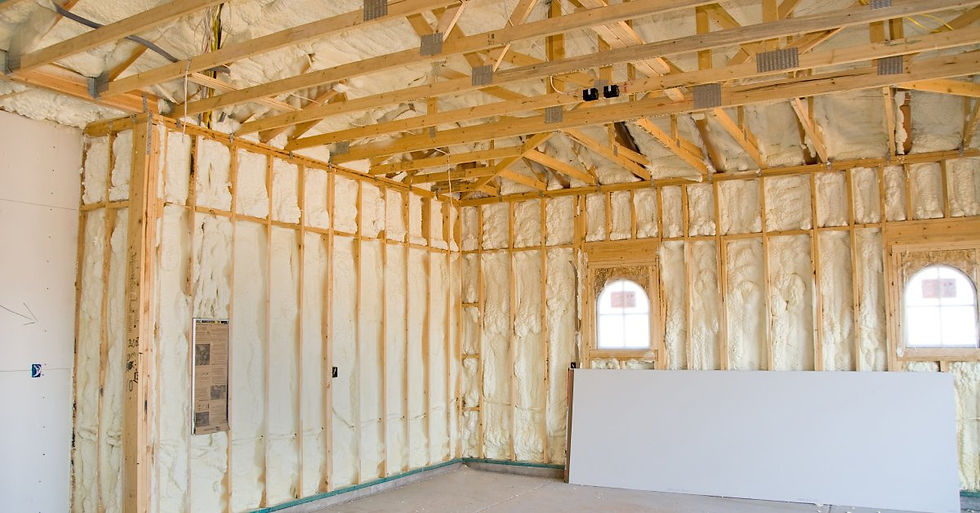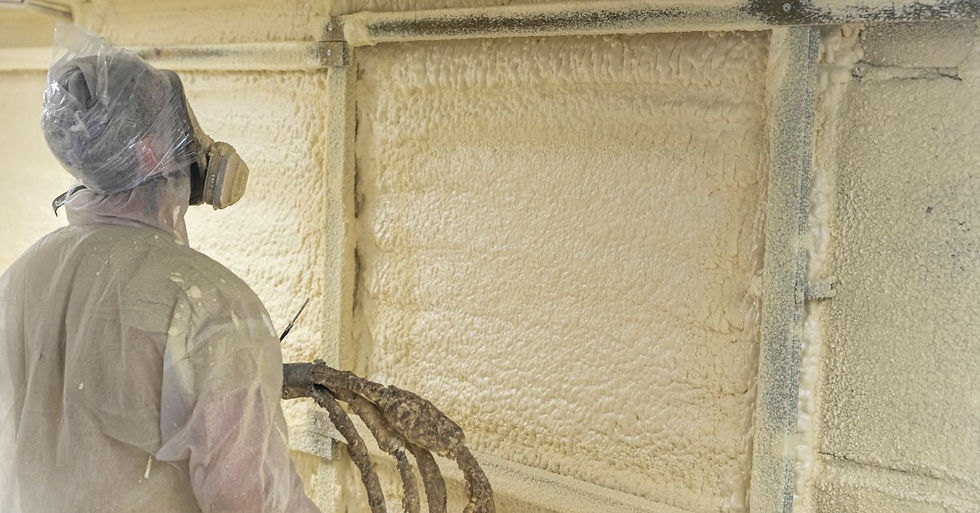The Benefits of 3500 PSI Pressure Spray Foam Hoses
- James King
- Oct 1
- 4 min read

Contractors using spray foam, polyurea, and coatings know that hose performance sets the tone for every job. Productivity, yield, and finish quality depend on stable pressure, consistent temperatures, and reliable flow from rig to gun.
Higher-pressure hoses help crews move faster, reduce rework, and keep equipment in service longer. Consider these benefits of a 3500 PSI pressure spray foam hose and gain a smart upgrade to put to work on your next project.
Improved Coverage Efficiency

Even coverage comes down to clean atomization and a stable fan shape at the tip. Higher working pressure produces finer particles that wet the substrate uniformly and build thickness with fewer passes. The improved coverage saves materials as pressure holds through long hose sets.
Crews get better edge-to-edge consistency around studs, outlets, and tight corners because the spray stays uniform at each trigger pull. This advantage also carries over to coatings, where controlled atomization reduces sags and breaks. Less touch-up time translates into a smoother schedule and a better finish for the client.
Faster Application Speeds
Time matters for large homes, school gyms, or warehouse roofs. A 3500 PSI hose supports higher flow rates without choking the proportioner, so installers move faster while keeping quality in check.
Crews complete passes in fewer strokes because the spray stays full, which shortens ladder time and reduces fatigue. A faster pace helps crews beat weather windows on exterior spray days and opens capacity for more jobs per month. Your bottom line benefits from tighter schedules and better crew utilization.
Compatibility With High-Performance Systems
Advanced proportioners and next-gen spray guns expect consistent pressure and temperature along the full hose length. A 3500 PSI hose pairs smoothly with those systems, supporting precise ratio control and responsive pressure balancing. Installers will see quicker recovery between pulls, especially with large tips and thick applications.
Distributors serving mixed fleets appreciate that a single hose spec works across spray foam and polyurea rigs, simplifying inventory. Field teams switching between open‑cell foam, closed‑cell foam, and elastomeric coatings maintain performance without swapping hose sets. Standardized compatibility means fewer variables to manage when training new technicians and scaling operations.
Durability and Longevity
Job sites are tough on gear. Hoses face constant flexing, abrasion across concrete and metal, and occasional impacts. A high-pressure spray hose with a 3500 PSI pressure rating goes hand in hand with reinforced constructions, such as braided steel or mesh scuff guards, which hold shape under stress and resist damage. That strength prevents blistering, microcracks, and permanent flat spots that restrict flow over time.
Owners running fleets of six or more machines see lower annual replacement rates when stepping up to stronger hose builds. Fewer mid-job failures reduce scrap, cleanup, and lost labor costs that rarely show up on the PO but hit profits every quarter.
Temperature Stability
Consistent chemistry depends on consistent heat, from rig to gun. Heated 3500 PSI hoses keep A and B materials in the proper range, which supports target viscosity and clean mixing at the chamber. Stable temperatures prevent crystallization in isocyanates and minimize off-ratio events that lead to brittleness or poor adhesion.
Crews start earlier in cold climates and maintain performance through afternoon wind shifts because heat stays uniform along the line. Owners see fewer purge cycles and less material wasted during restarts. This steadiness turns into dependable cure times and repeatable yields across seasons and sites.
Versatility Across Applications
Contractors juggling spray foam and polyurea need a hose that performs across chemistries. 3500 PSI pressure spray foam hoses benefit the handling of dense coatings on steel, elastomeric membranes on roofs, and open‑cell foam in residential builds without compromising flow or control. Switching jobs by swapping guns and changing tips keeps rigs working more days each month.
Distributors stocking one versatile hose cut complexity and provide faster replacements to crews in the field. Installers appreciate familiar handling from project to project, which reduces learning curves and keeps quality high. This flexibility aligns with the way mixed‑service contractors grow their book of business.
Reduced Downtime
Unexpected hose issues sink schedules. End-of-line failures, delamination, or sudden pressure loss ripple through labor plans and client commitments. A 3500 PSI hose gives you a larger safety margin, which lowers the odds of an outage during peak production hours.
A dependable hose also reduces the micro‑downtime that creeps into a day, such as clearing blockages or nursing weak flow through tight bends. Fewer interruptions help crews maintain rhythm, which is where the best finish quality and highest yields appear.
Enhanced Safety
Pressurized systems demand respect and solid equipment. A hose capable of 3500 PSI contains surges, pressure spikes, and abrasion damage that lead to dangerous failures. Safer gear supports safer habits; technicians move with more confidence on lifts and scaffolds when the line responds predictably at the trigger.
Safety managers appreciate wider pressure headroom during startups, purges, and tip changes. Clear labeling and traceable construction details assure inspections and audits. Fewer near‑misses and incidents protect people first and also help protect insurance ratings and business reputation.

Precision in Tight Spaces
Detail work around mechanical rooms, rim joists, and congested truss bays benefits from a responsive line. Whip hoses rated at 3500 PSI deliver the flexibility and control needed to feather the trigger and trace clean edges. Installers navigate around conduit and ductwork without starving the gun or deforming the spray fan.
The result is crisp transitions, consistent thickness, and reduced trimming on foam jobs. Coatings teams gain fine control on corners, welds, and laps, which limits overspray and cleanup. A nimble end section paired with a high-pressure main line gives crews the best of both worlds: Power and precision.
Optimized for Long-Distance Applications
Large facilities, high-rise retrofits, and sprawling roofs demand hose runs that stretch. A 3500 PSI hose keeps pressure losses in check over long distances, which preserves atomization and flow at the gun. Installers maintain target output even when rigs must stage far from the work face due to ventilation, power, or access constraints.
Reliable performance at distance reduces the temptation to push equipment beyond recommended limits. That discipline protects pumps and proportioners while delivering predictable results to the client.
Every pass with the gun either builds profit or chips away at it. A 3500 PSI pressure spray foam hose supports the steady flow, atomization, and heat control that high-quality work depends on. If your goal is reliable performance on spray foam, polyurea, and coatings, step up your hose spec and give your crews the tools they need to deliver on schedule and to spec.





